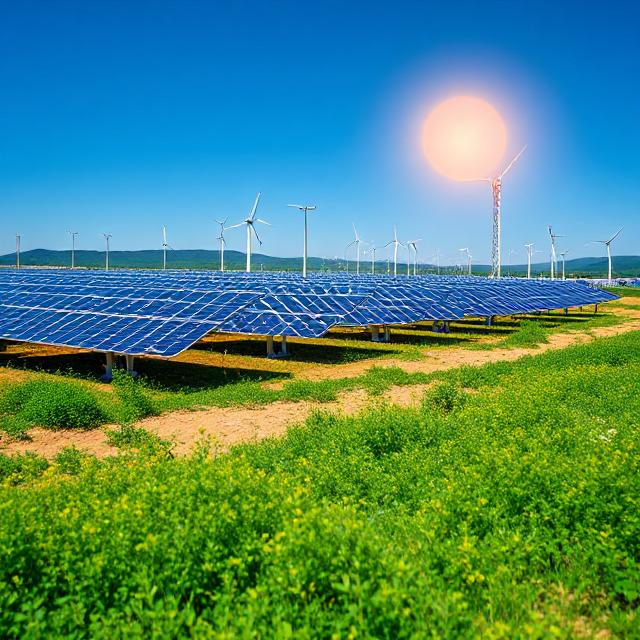How to Install a Solar Power Plant for Your Farmhouse: Complete Guide (Costs, Profits & ROI)
As energy prices continue increasing, very many homeowners are looking into the possibilities of adopting green energy and quite sustainable, cost-effective means of powering their homes. If you have a farmhouse, making it energized with a solar power plant would mean cutting down electricity bills and having a reliable eco-friendly energy source. This whole guide takes you through the entire solar panel installation process from costs to benefits and return on investment (ROI) of the investment.

Why Install Solar Panels in Your Farmhouse?
Open spaces tend to have a lot attached to them, making farmhouses those perfect areas for solar energy for home solutions. The right solar energy system for home can yield electricity and thus lessen reliance on the grid while leaving a lower carbon footprint.
Solar Power Plant Installation Procedure
1. Assess Your Energy Needs
Before choosing solar panels, assess the electricity consumption of the home. Check past electricity bills in order to assess the energy requirement of the whole farmhouse. This will help you choose good solar panels based on the efficiency of panels and output.
2. Choosing the Right Solar Panel System
There are various solar panel systems for residential homes:
- Grid-tied systems — Connected to the grid such that excess energy produced can either be stored back in batteries or sold to the electricity provider.
- Off-grid systems — Operate completely independently from the grid and need battery storage.
- Hybrid systems — A more versatile combination of both grid-tied and off-grid elements, offering higher security over energy.
Most commonly, for far-off power availability in a farmhouse, a solar energy home system with battery backup will be the best option.
3. Identify Suitable Sites
Solar panels need a lot of sunlight to work perfectly. Place them on top of the farmhouse. Otherwise, you may want to plant the solar panels in an open area of land well exposed to the sun and with little shade. The orientation of the panels should be given a proper angle (in India, it is typically south facing) so as to absorb maximum sunlight.
4. Estimate Costs for Installation
Costs for solar panels for homes vary according to type and, of course, other parameters such as installation difficulty and the associated battery storage. On average, the costs mean that
- A solar system of 3 KW costs between ₹1.5–2 lakh
- A 5 KW solar system costs around ₹2.5–4 lakh
- A 10 KW solar system costs in the range of ₹5–7 lakhs
For reasonably priced solutions, try looking for companies selling affordable solar panel installations with the maximum efficiency and reasonable rates.
5. Install Solar Panels and Inverter
After selecting good residential solar panels, hire professionals to secure the installation. The inverter is an important piece of equipment converting solar energy into usable electricity for your home.
6. Install Battery Backup (Optional)
When you’re choosing the off-grid or hybrid system, it needs battery storage to store any extra energy consumed at night or cloudy days. Although it raises the cost, it ensures an uninterrupted supply.
7. Connect to the Grid (For Grid-Tied Systems)
This is the last segment that should be done for grid-tied systems; contacting your local electricity provider to your dwelling to be able to integrate your system into the grid to generate credits for surplus power.
8. Monitor and Maintain the System
If the system needs proper maintenance, it would work more efficiently and last longer. It involves cleaning the solar energy panels for home every few months and then inspecting the wires and battery storage to avoid any kind of efficiency loss.
Benefits of Setting Up Solar Power in Your Farmhouse
1. Reduced Electricity Bills
The energy can be consumed free of charge, thus reducing or even eliminating the electricity bill from the house.
2. Clean Sources of Energy
It is a renewable source of energy that can be called less pollution per capita for the environment with a commitment to sustainability.
3. Higher Property Value
Houses equipped with solar energy for household use generally attract higher buyers, thus making it more valuable when put for resale.
4. Energy Independence
For farmhouses that are located far and isolated within areas, this arrangement will ensure that a house has power that is steady without dependence on the uncertain grid supply.
5. Government Incentives & Tax Benefits
Subsidies for installing solar energy for house installations are offered by the Indian government. Therefore, it has turned out to be a cost-effective investment.
Return of Investment (ROI) in Installing Solar Panels
The solar energy investment has long-term benefits in terms of finances. Typical pay-back for a solar system ranges between 5–7 years. The years depend on the consumption of electricity and energy rates in the local area. Quality solar panels can produce at least to 25–30 years, and thus have long-term savings and profit.
Conclusion
Having to install a solar energy system for home at your farmhouse is not only a wise investment but also a sustainable one. With the right planning and investments, you can reap independence from the grid, savings, and environmental benefits. If you’re ready to go solar, check out the best installation options here at Saur Shakti!
Comments
Post a Comment